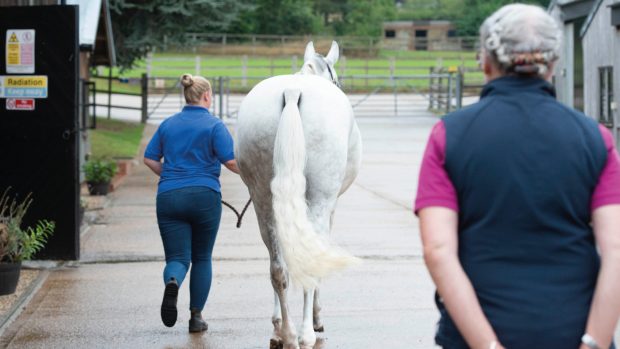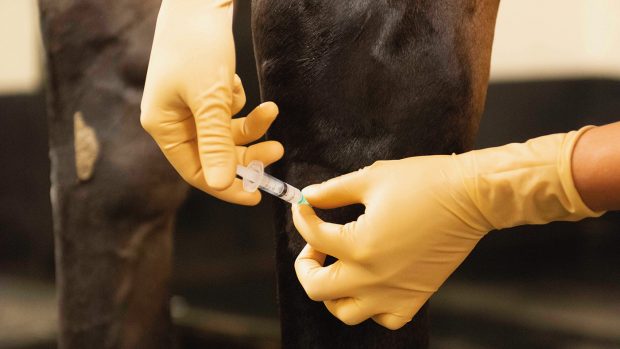Start with the feet
Take the horse out of the stable and stand him on a level surface. The majority of lameness in horses originates in the foot, so eliminate the most obvious causes first. Pick the feet out and check for any stones that may have become lodged in the sole, frog groove or underneath the shoe.
Also check the feet for sharp objects which could have worked their way into the sole of the foot, heat in the hoof wall or any other injuries in that area.
If you suspect the horse is lame in his foot, it is a good idea to have the shoe removed so that the cause can be investigated further.
If you cannot find anything in the horse’s feet, the next step is to start moving your hands up the legs, feeling for heat around the coronary band and the heels.
Check for signs of heat and swelling very carefully between the fetlock and the knee or hock, to help rule out any problems in the tendon or ligament area. The knee, elbow and shoulder in the foreleg, and the hock, stifle and hip in the hind leg will also need to be examined.
Trotting up
Find a firm, level surface and ask a competent handler to lead your horse on a fairly loose rein, so that his head is not restricted while he is moving. Watch the animal walk and trot away from you and then towards you in a straight line. If the lameness is not clear, also watch him on a circle.
It takes a great deal of practise and a trained eye to detect which leg is lame at first sight, but there are some obvious signs which you can look out for:
Make the grade
Grading the severity of the lameness on a scale of 0 to 5 can make it easier to monitor your horse’s condition and will also help the vet when you describe the problem to him.
- 0 — Sound
1 — Barely detectable lameness at walk and trot
2 — Mild lameness at walk, obvious lameness at trot
3 — Obvious lameness at walk
4 — Severe lameness at walk, unwillingness to trot
5 — Non weight-bearing lameness



